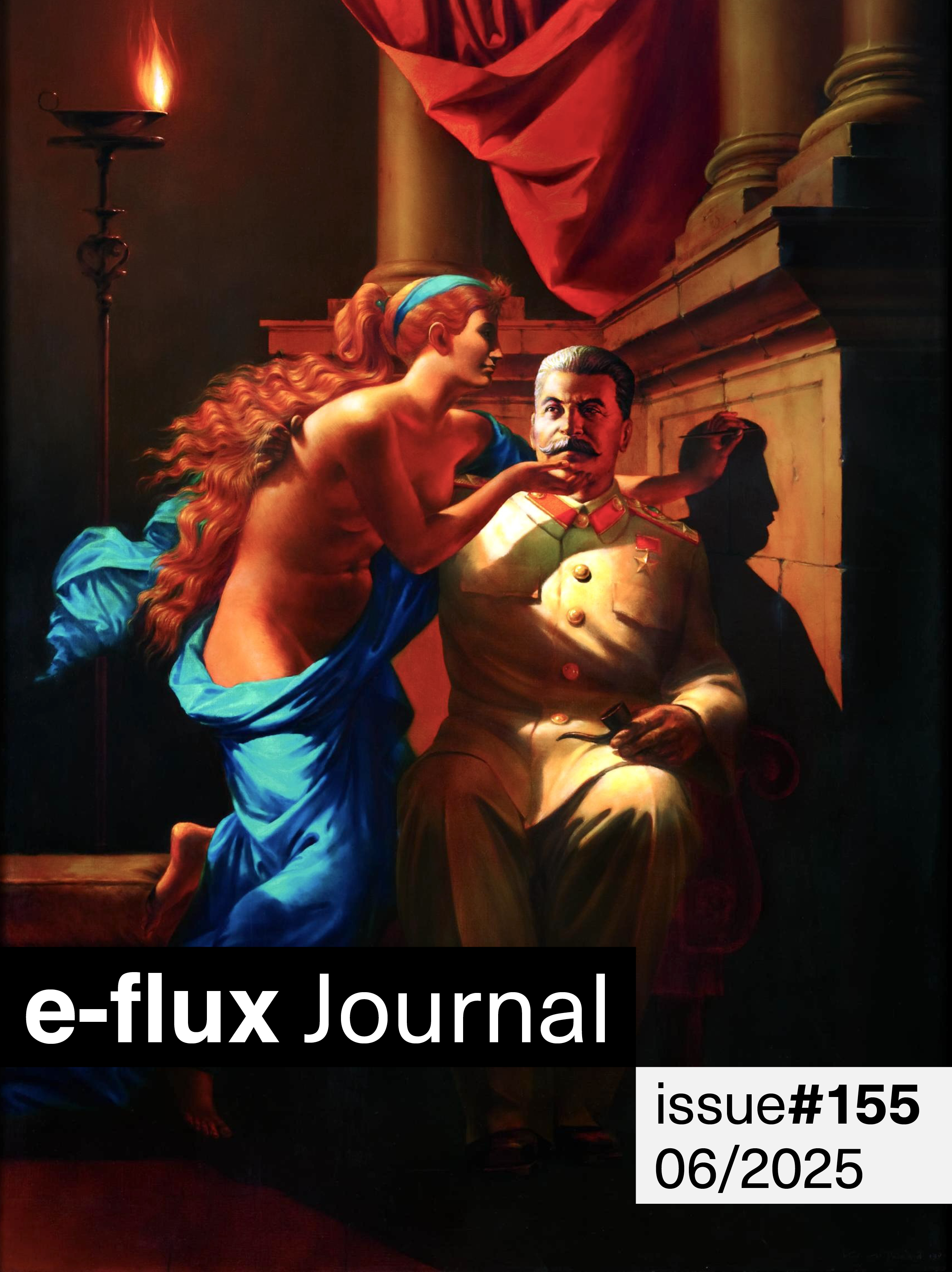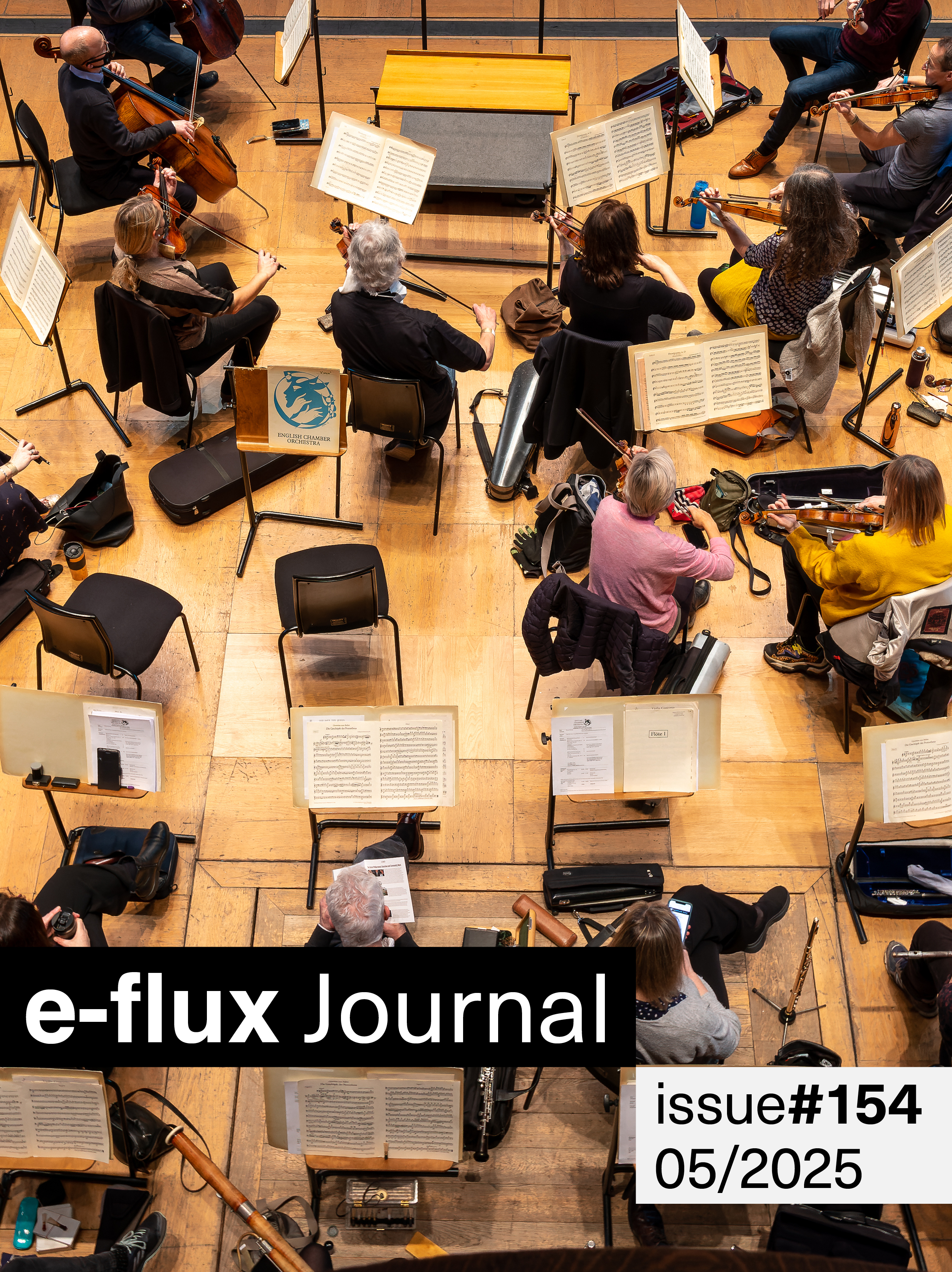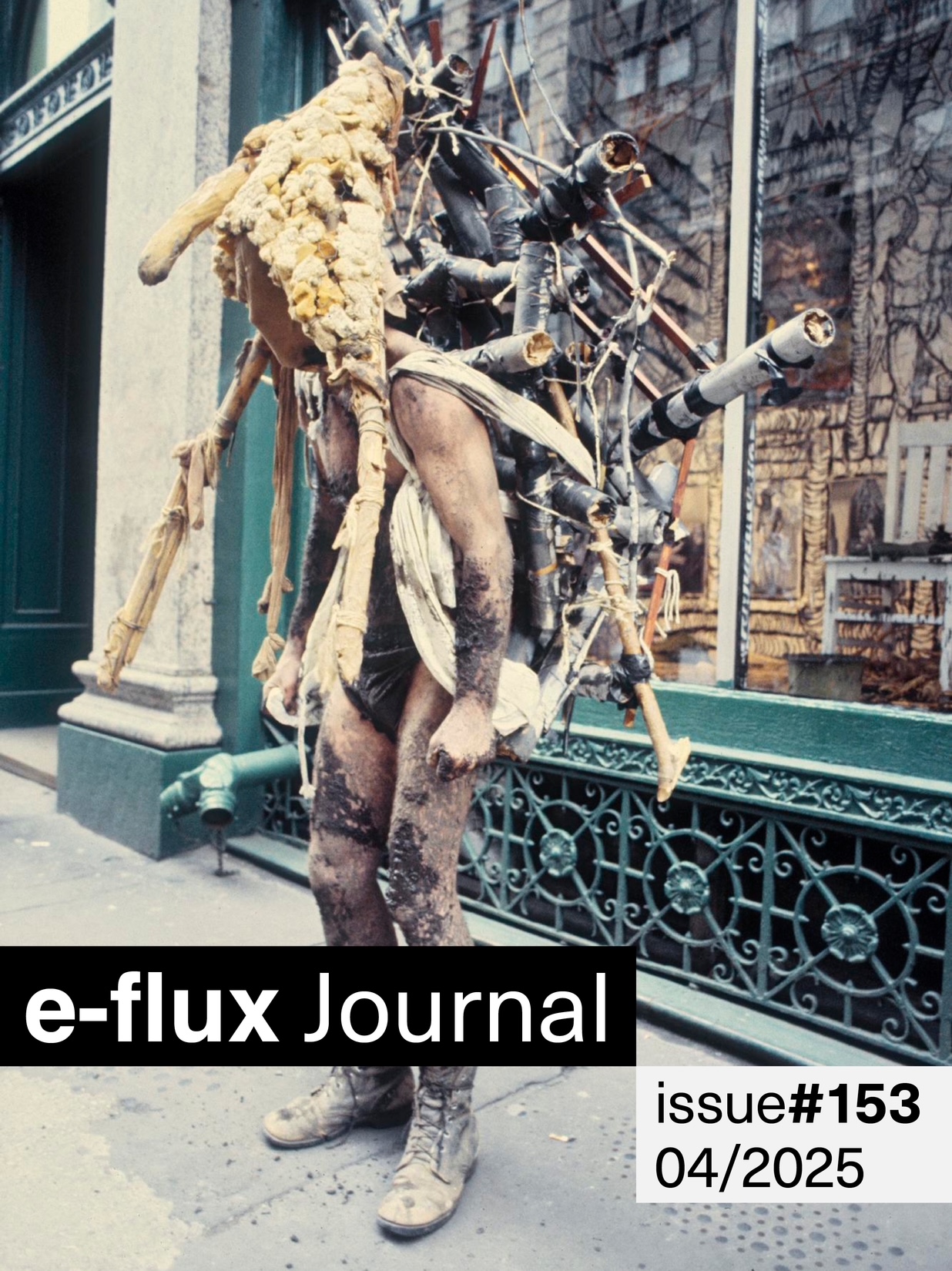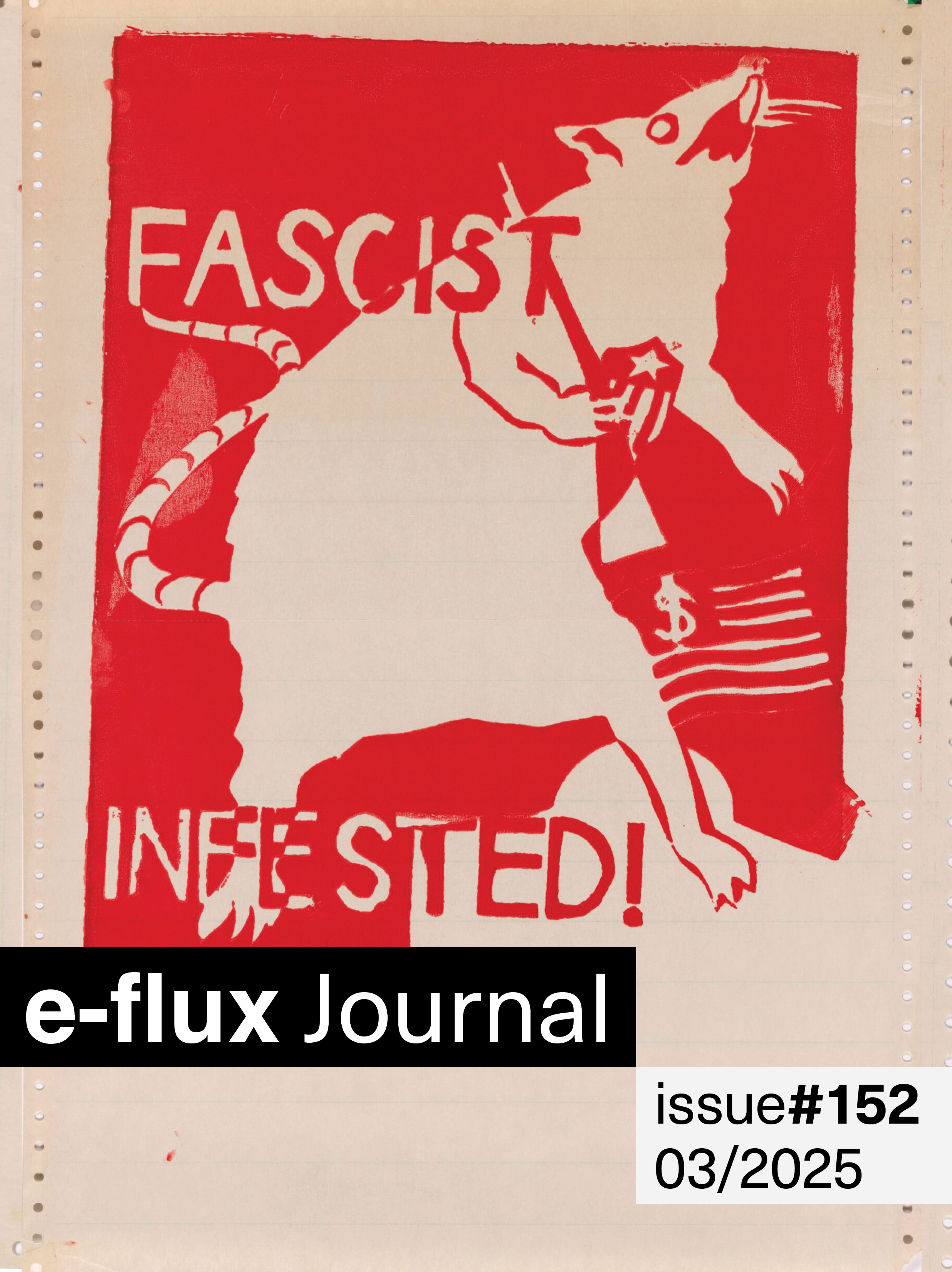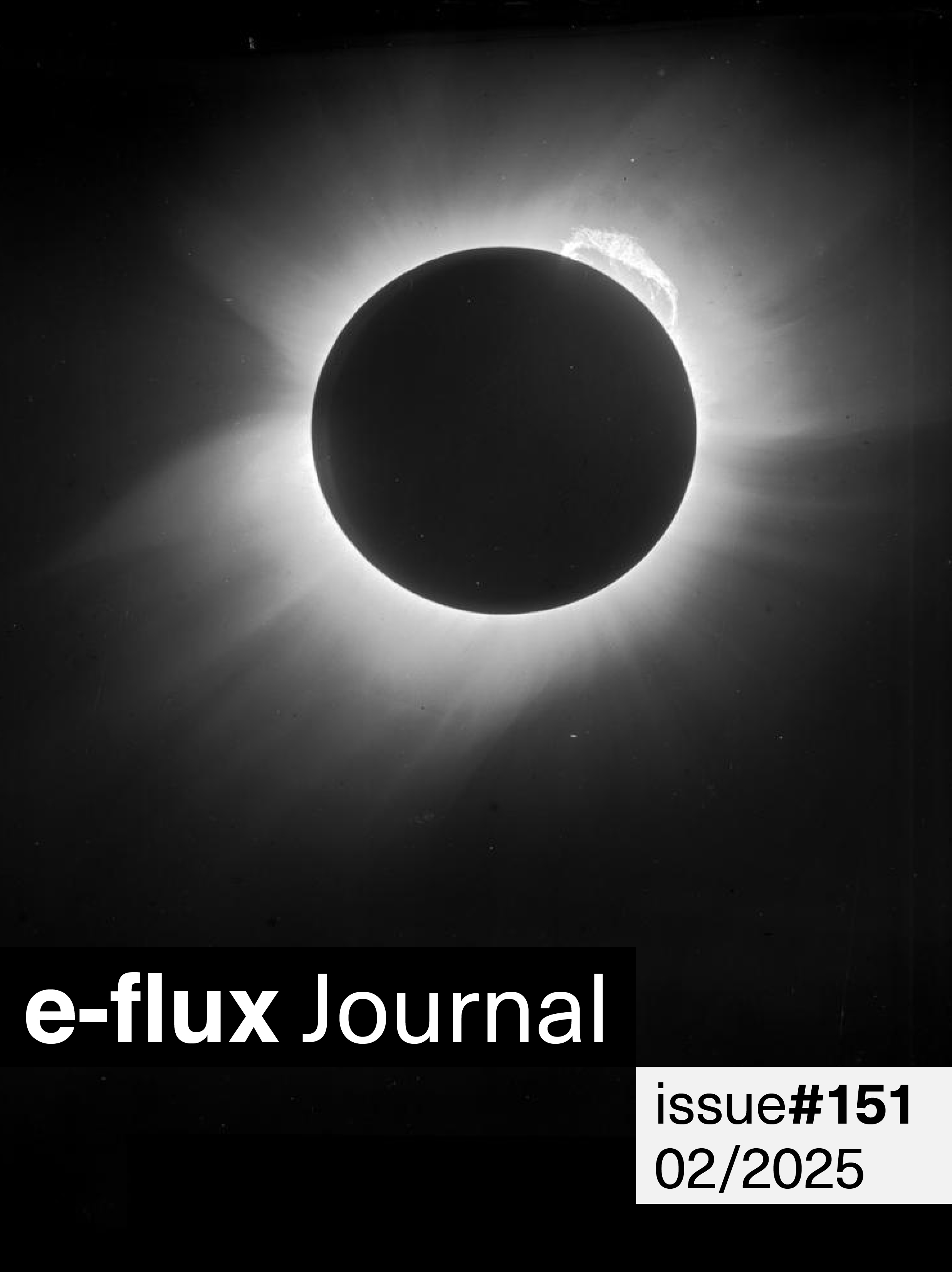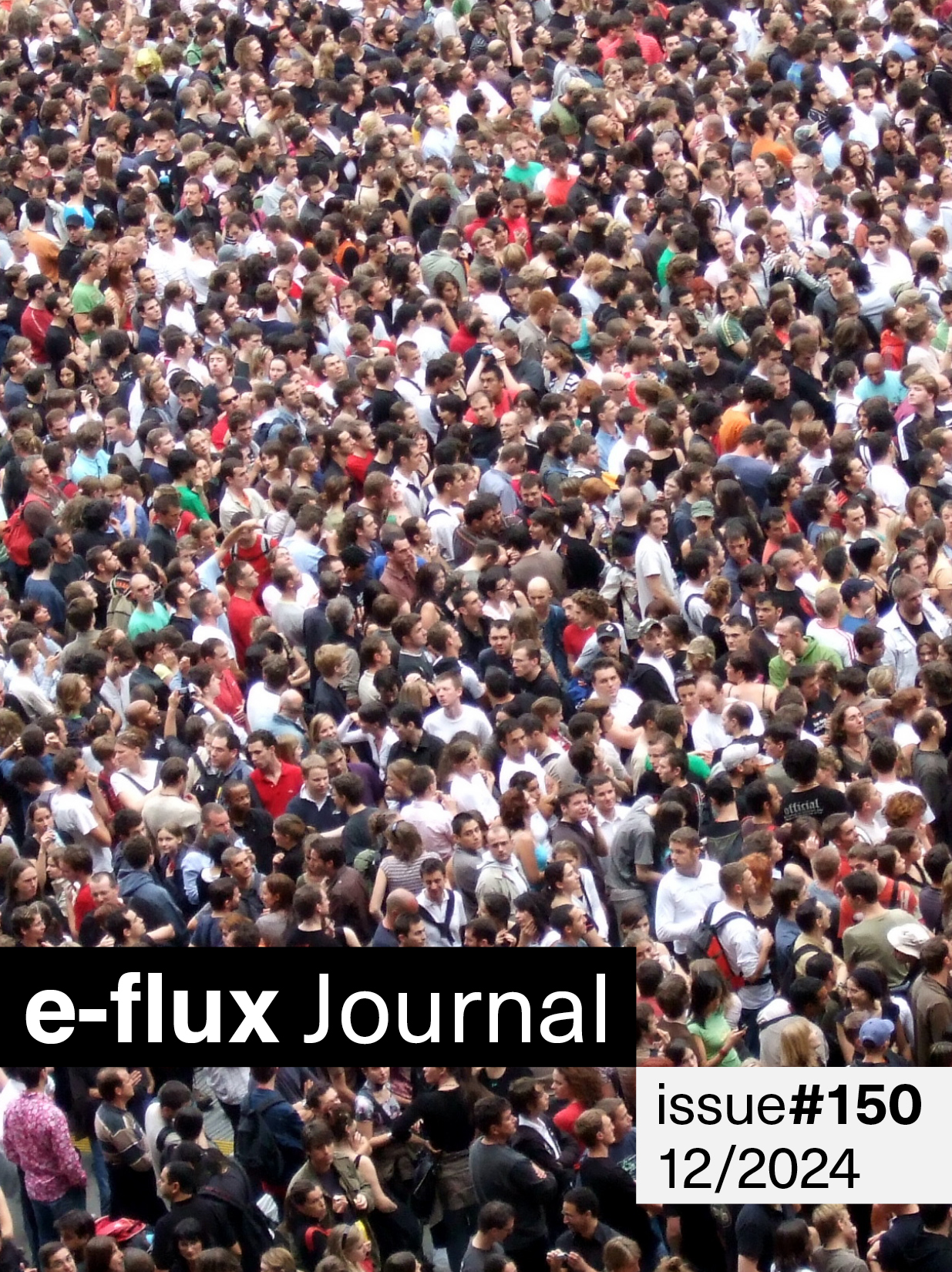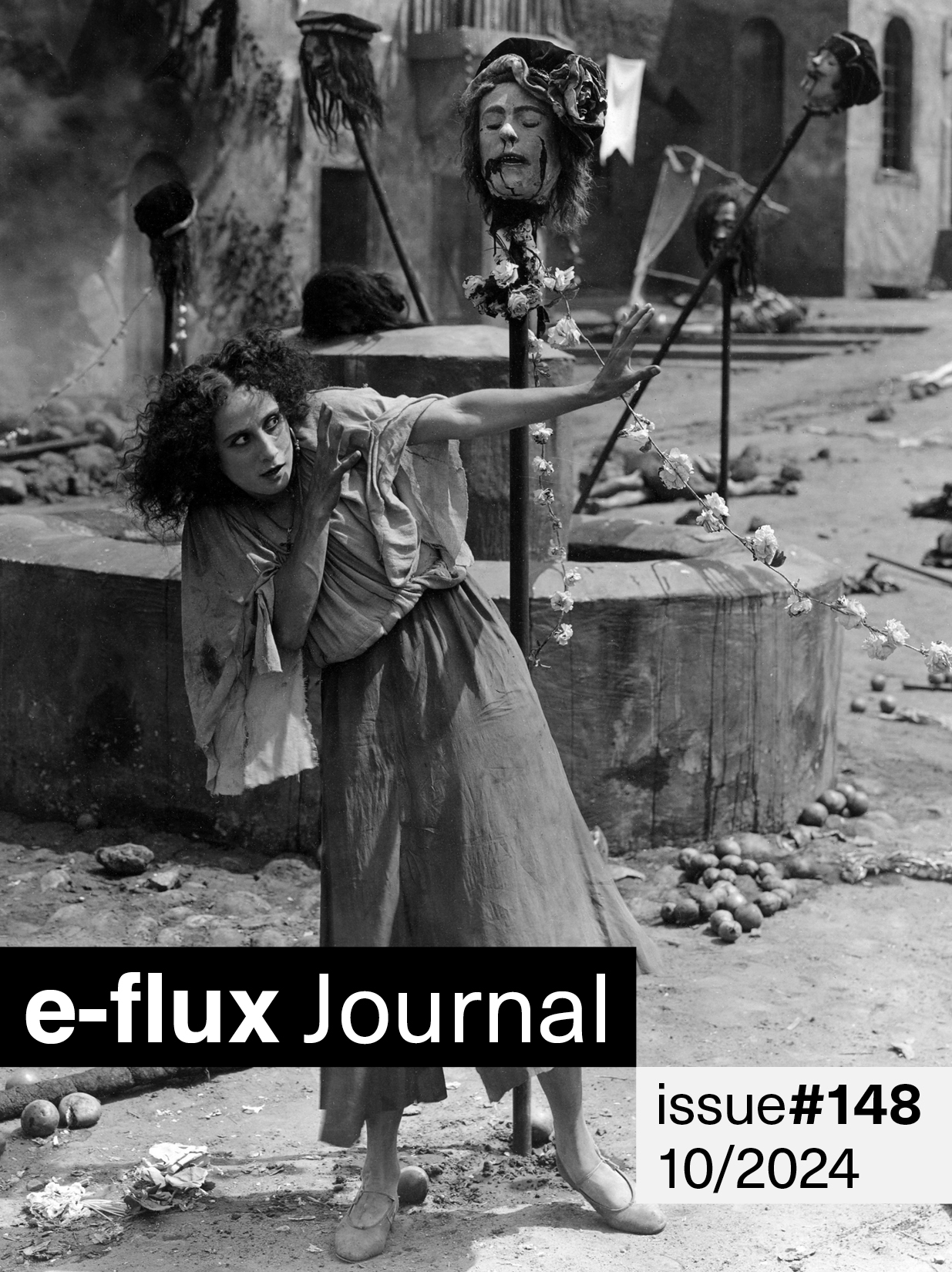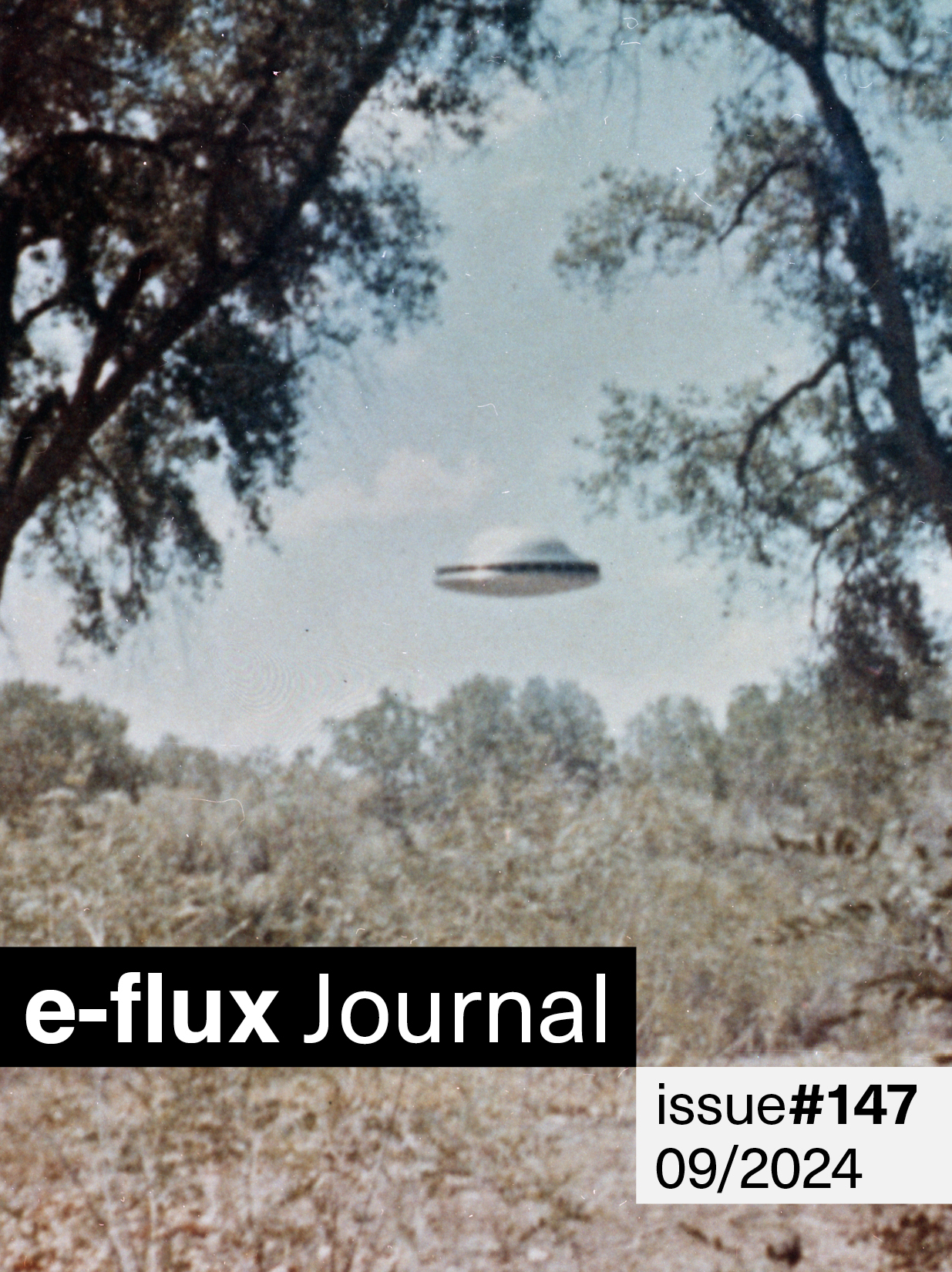Issue # 21
December 2010
Available online:
e-flux.com/journal
We would like to see a way out of this, but questioning whether cultural work can actually have a real effect on power relations, or whether capital, public or private, should really be a measure of art’s civic or cultural value in the first place, only serves to accelerate the endless cycling—consuming life, finding work, making money, finding funding, spending it. And as you feel yourself somehow sitting next to your own working body, your last hopeful, analytical nerve pushes you to ask whether total withdrawal might be the key to reclaiming your life as you might have once known it. Or could it be the opposite: work harder, push the machine till it utterly collapses (or you do), and just see what happens? And the other question: What happened to art?
In the first of a three-part series on the creative class, Martha Rosler looks at the many ways artists have been deployed as agents of gentrification. When city municipalities found that the culture of bourgeois spectatorship could be a weapon for eradicating urban poverty precisely by driving the poor out of their homes, a painful chain of events was set in motion to reconfigure urban space to suit the needs of capital by way of the bohemian lifestyle. In this scheme, artists in search of cheap rent would function as the avant-garde, the first wave of attack, the pioneers. (see full essay here)
Ekaterina Degot takes us on a fateful visit to Donetsk, recounting a visit to the Ukranian city for an event organized by a newly opened “platform for cultural initiatives” in a former factory. Amidst mystifying and cartoonish scenarios of infrastructural breakdown and privatization, Degot rides a roller coaster of contradictions around the desire to transform a crumbling Soviet relic into a dynamic center for contemporary art. (see full essay here)
Hito Steyerl confronts contemporary art as a place of exploitation and postdemocratic pleasures, as a tool for extracting labor from the ambitious in exchange for visibility and for extracting visibility from labor in exchange for ambition. And while so many artists attempt to produce political work, “one could even say that the politics of art are the blind spot of much contemporary political art.” (see full essay here)
Liam Gillick interrogates “contemporary art” as a term that has outlived its application. Its very flexibility and all-encompassing character might give it a whiff of tolerance and even generosity, but its limited ability to accommodate much of the work now made under its gaze has begun to lend its original pluralism a hegemonic sense of inescapability in the midst of a mass of opportunities. But, as Gillick points out: “That is the genius of the regime. It is the perfect zone of deferral.” (see full essay here)
In the second in a series of essays, Franco Berardi considers the radicality of exhaustion as a possible way out of the neoliberal cycle of monetarist competition and growth in Europe. At a time when contraction and deflation are the overwhelming trend both demographically and economically in Europe, we look to understand the figure of the elderly pensioner as embodying a potential alternative to the too-easily exploitable ethos of youthful drive and enthusiastic overproduction. (see full essay here)
In Hans Ulrich Obrist‘s expansive conversation with Hakim Bey, the anarchist writer best known for his book T.A.Z.: The Temporary Autonomous Zone, discusses his lifelong struggle to find ways of creating the autonomy to live as one pleases, with or without the prospect of revolution. Traversing the importance of traveling, the possibilities for anarchist institution building, the question of religion, the viability of pirate utopias and the communal movement, running a cultural center in Tehran under the Shah, and the vast and often bizarre local history of the Hudson Valley, we find that great projects are not necessarily compromised by limited durations, for not everything is meant to last forever. (see full essay here)
—Julieta Aranda, Brian Kuan Wood, Anton Vidokle
The print edition of e-flux journal can now be found at:
Amsterdam: De Appel / Rijksakademie van beeldende kunsten Antwerp: M HKA Museum van Hedendaagse Kunst Athens: OMMU Aubervilliers: Les Laboratoires d’Aubervilliers Auckland: split/fountain Austin: Arthouse at the Jones Center Banff: Walter Phillips Gallery, The Banff Centre Barcelona: MACBA / Basel: Kunsthalle Basel, Museum fur Gegenwartskunst Bergen: Rakett Beijing and Guangzhou : Vitamin Creative Space Beirut: 98weeks Berlin: b_books / Berliner Künstlerprogramm – DAAD / do you read me? / NBK, Neuer Berliner Kunstverein / Pro qm Berlin and Zurich: Motto Birmingham: Eastside Projects Bologna: MAMbo – Museo d’Arte Moderna di Bologna Bregenz: Kunsthaus Bregenz Bristol: Arnolfini Brussels: Wiels Bucharest: Pavilion Unicredit Cairo: Contemporary Image Collective (CIC) / Townhouse Gallery Calgary: The New Gallery Chicago: Graham Foundation / The Renaissance Society Dublin: Project Arts Centre Dusseldorf: Kunstverein für die Rheinlande und Westfalen Eindhoven: Van Abbemuseum Frankfurt: Portikus – Städelschule Genève: Centre de la Photographie Ghent: S.M.A.K Glasgow: CCA Centre for Contemporary Arts / Sculpture Studios Graz: Grazer Kunstverein / para_SITE Gallery Hamburg: Kunstverein Hobart: INFLIGHT Istanbul: BAS / DEPO / Platform Garanti Cologne: Kölnischer Kunstverein Leeds: Pavilion London: Architectural Association/Bedford Press / Gasworks / ICA / Serpentine Gallery/ Visiting Arts Los Angeles: REDCAT Lisbon: Maumaus, Escola de Artes Visuais Ljubljana: Moderna Galerija Luxembourg: Casino Luxembourg Marfa: Ballroom Marfa Madrid: Brumaria / CA2M / Pensart Mexico City: Proyectos Monclova Munich: Museum Villa Stuck / Walther Koenig Bookshop, Haus der Kunst Munich New Delhi: Sarai-CSDS New York: e-flux / Independent Curators International (ICI) / Printed Matter, Inc Nottingham: Nottingham Contemporary Omaha: Bemis Center for Contemporary Arts Paris: castillo/corrales – Section 7 Books / Centre Pompidou Portland: Portland Institute for Contemporary Art, (PICA) / Publication Studio Prishtina: Stacion – Center for Contemporary Art Prishtina Riga: Kim? Rio de Janeiro: Capacete Providence: AS220 Rotterdam: Witte de With Salzburg: Salzburger Kunstverein San Antonio: Artpace São Paulo: Master in Visual Arts, Faculdade Santa Marcelina Seoul: The Books / The Book Society Sherbrooke: Foreman Art Gallery of Bishop’s University Skopje: Press to Exit Project Space Sydney: Artspace Ramecourt: Performing Arts Forum, St Erme Outre et Ramecourt Stockholm: Bonniers Konsthall / Index / Konstfack, University College of Art, Craft and Design Stuttgart: Württembergischer Kunstverein Stuttgart Tallinn: Kumu Art Museum of Estonia Toronto: Mercer Union / The Power Plant Torun: Centre of Contemporary Art Znaki Czasu in Torun Utrecht: BAK, basis voor actuele kunst / Casco-Office for Art, Design and Theory Vancouver: Morris and Helen Belkin Art Gallery, University of British Columbia / READ Books, Charles H. Scott Gallery, Emily Carr University of Art and Design Vilnius: Contemporary Art Centre (CAC) Warsaw: Zachęta National Gallery of Art Wiesbaden: Nassauischer Kunstverein (NKV) Zagreb: Gallery Nova Zurich: Postgraduate Program in Curating, Zürich University of the Arts / White Space.
